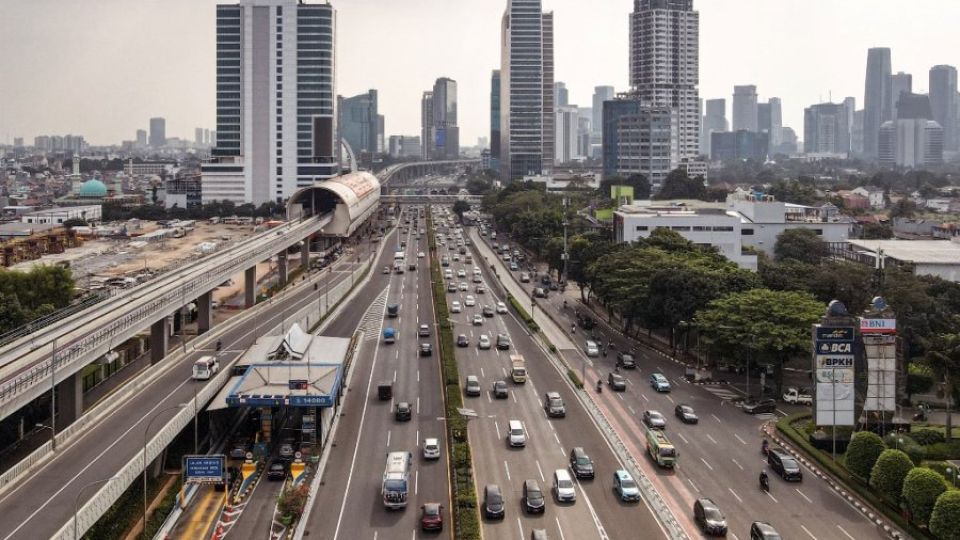February 9, 2023
JAKARTA – Slow growth in gross fixed capital formation (GFCF), or investment, points to problems in the real sector, analysts say, though they disagree on how big an issue that is for Indonesia’s economy.
The country’s gross domestic product rose 5.31 percent last year, Statistics Indonesia announced on Monday, marking the fastest annual increase in economic output since 2013.
However, a closer look at the individual GDP components reveals that the GFCF underperformed with a year-on-year (yoy) increase of just 3.87 percent, which is a bit higher than the 3.8 percent seen the preceding year, but it remains significantly below the pre-pandemic level. In 2019, for instance, it was 4.45 percent.
While government spending performed even worse last year with a yoy decline, the slowdown in GFCF growth is arguably more alarming, as it reveals a lack of confidence among businesses about their economic prospects.
In a nutshell, the GFCF is the accumulation of spending for capital goods with more than one year of usage. It reflects investment in productive assets like housing and non-housing buildings, physical infrastructure such as roads and airports, machinery and equipment.
Finance Minister Sri Mulyani said GFCF growth was supported by the government’s continuous efforts to develop downstream industries, which required large investments for productive purposes.
“Meanwhile building construction, which is the biggest contributor to the GFCF, is growing at a relatively moderate [pace] amid the high price of building materials and sluggish property sales, especially for office buildings and upper-class residential [buildings],” the minister said in a statement on Tuesday.
Josua Pardede, chief economist at Permata Bank, told The Jakarta Post on Tuesday that one indicator pointing to an unsatisfactory building sector was last year’s cement sales, which were lower than the preceding year.
Nevertheless, he added that Indonesia’s economy was fundamentally in good shape and pointed out that President Joko “Jokowi” Widodo’s aggressive infrastructure drive in the past years, such as in 2021, had set a high baseline for the GFCF, which made last year’s growth look slow.
On the other hand, Institute for Development of Economics and Finance (INDEF) researcher Abdul Manap expressed concern about the latest GFCF number. According to him, the data reflected a lack of investment in the real economy, and hence in industries that tended to create a lot of employment.
“That’s why our unemployment figure is still at 8.42 million,” he told the Post on Tuesday.
Another cause for worry, according to Abdul, was the uncertain global economy that may push the United States Federal Reserve to increase interest rates again. Such a move may encourage Bank Indonesia to follow suit and would affect the investment climate in the country.
“If GFCF growth was slow last year, when Bank Indonesia’s [benchmark interest rate was still lower], how will it be this year [after the central bank increased the rate]?” Abdul asked.
Bank of America has maintained its 2023 GDP growth forecast for Indonesia at 5.1 percent, slightly below last year’s increase of 5.3 percent.
Strategic infrastructure construction may help
Bank Permata’s Josua also said Indonesia needed more job opportunities that could employ many people. He opined that the GFCF may grow faster this year if the government opened up investment opportunities, for example by building new infrastructure outside of Java.
He suggested the government make an “investment blueprint” for labor-intensive industries.
Similarly, INDEF’s Abdul said the government needed to be thoughtful about building new infrastructure, so as to ensure that it would be beneficial for people.
“We have to avoid past [mistakes], when we built an airport, for example, that currently isn’t used, but we still need to pay the loans to build it,” Abdul said.
Abdul also stressed the need for foreign investment to provide employment for local workers, not just for people from the investor’s country of origin. He also suggested the government entice local investors.
Josua explained that, given the low base last year, the GFCF may grow faster this year, indications of which may be seen in the coming six months.
However, he said, many investors tended to take a wait-and-see stance before a presidential election, which was why he expected slow GFCF growth in the second half of this year.
Bank of America, for its part, forecast that investment would continue to grow as authorities attempted to complete projects ahead of the elections, but some deceleration was likely to occur if the private sector pulled back.


